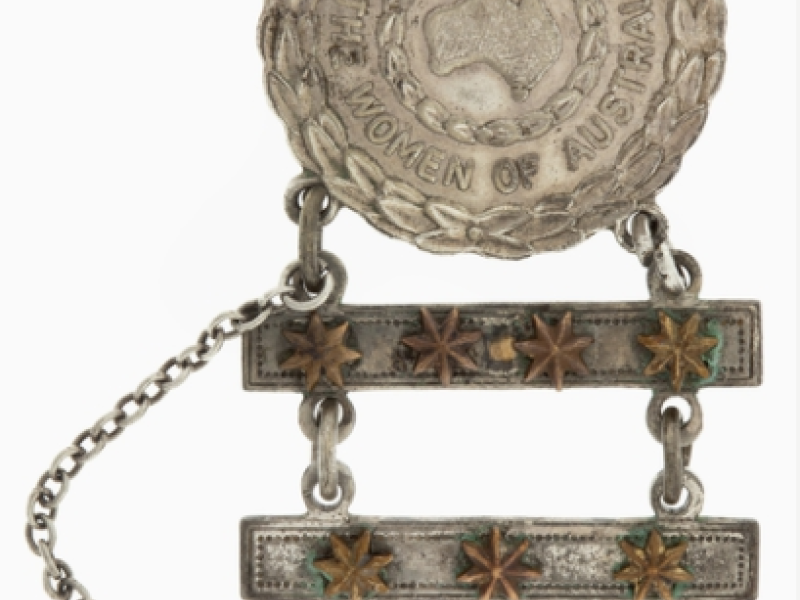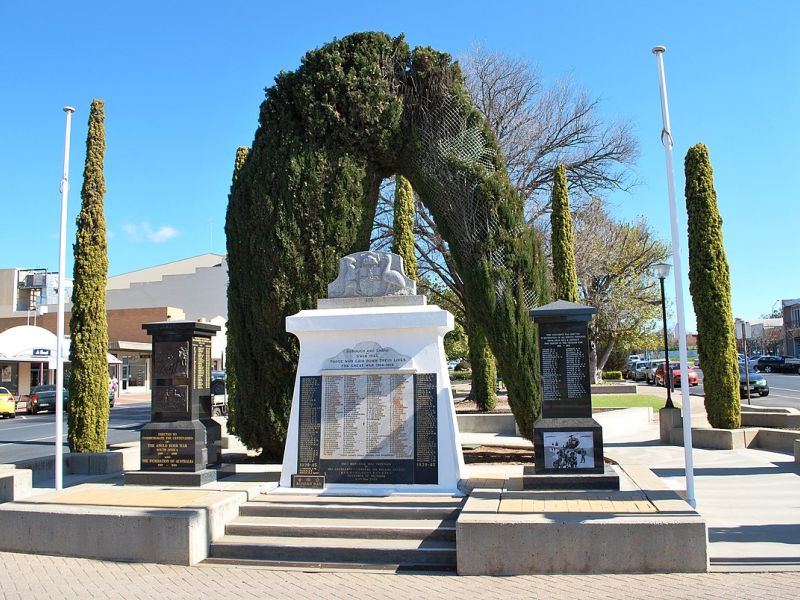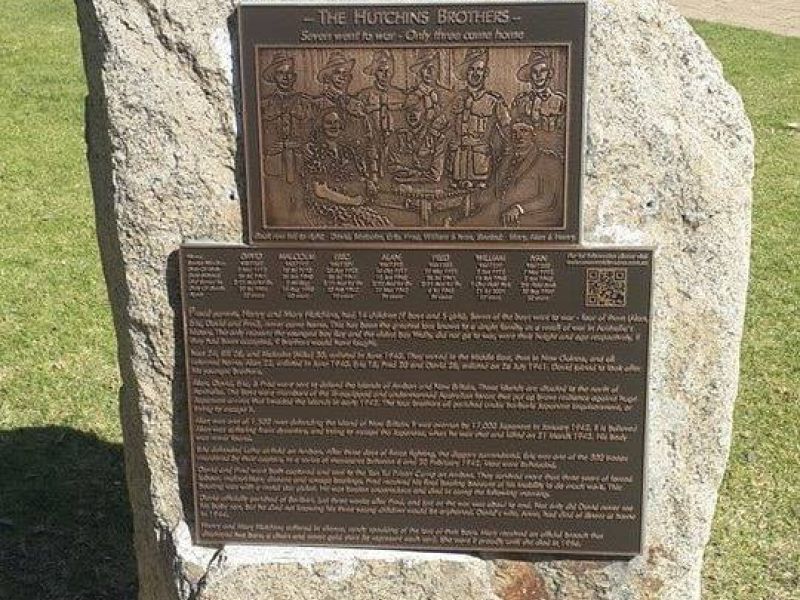A Mother and Her Seven Soldier Sons
In 2013, two remarkable badges were offered for donation. They were a Female Relative Badge with seven stars and a Mothers and Widows’ Badge with four stars, both from the Second World War. Some of you will immediately recognise the value and rarity of these badges.
The two badges belonged to Mrs Mary Hutchins. She had nine sons and two daughters with her husband Henry in Woorinen, rural Victoria. Seven of her sons enlisted with the Australian Imperial Force during the Second World War. Aged between 17 and 30, they worked mostly as labourers in the local rural community.
Mrs. Hutchins must have been very proud of her boys because in order to be issued the Female Relative Badge, she needed to prove she was their closest female relative. She would have also applied for each star individually: one star for each son.
Four of her sons, David, Alan, Fred and Eric, had served in the ill-fated Gull and Lark Forces in Ambon and Rabaul respectively. A few servicemen managed to escape the overwhelming Japanese invasions, but for the duration of the war, little was known of what happened to the remainder.
Later in the war, the Hutchins family heard anecdotally from one of the successful Rabaul escapees that Alan Hutchins might have been shot and killed whilst trying to escape the advancing Japanese.
By the end of 1945, three of the Hutchins’ sons had been discharged and were safely home but there was no definite word of the fate of their four brothers. Then, in one week in February 1946, four telegrams arrived confirming the deaths of four of the Hutchins boys.
One confirmed Alan had been killed in Rabaul during the hostilities in March 1942. In the following years, Australia would learn of the ruthlessness of those invasions and the horrific experiences faced by the prisoners of war. Conditions for the prisoners on Ambon were particularly harsh and they suffered the highest death rate of any Australian prisoners of war with three-quarters of prisoners dying during their captivity due to mistreatment, malnutrition and disease.
Three of the Hutchins brothers died due to the brutality of their Japanese captors in Ambon. Eric was executed at Laha in February 1942; Fred and Eric died as Prisoners of War.
These badges reveal something of Mary and her grief and love for her sons. Her Mothers and Widows’ Badge involved a similar process to the Female Relative Badge and Mary would have applied for each star individually.
According to the Hutchins family and their descendants, Mary never wore this badge nor did she ever speak about her loss of four sons.
Yet she wore her Female Relative Badge with pride, every day for the remainder of her life. The Mothers and Widows’ Badge was kept hidden away with her grief.
Tamsin Hong
Read more about the Hutchins sons - https://www.awm.gov.au/collection/C1371228
- Australian War Memorial https://www.awm.gov.au/collection/C1371228

 Australian War Memorial
Australian War Memorial
